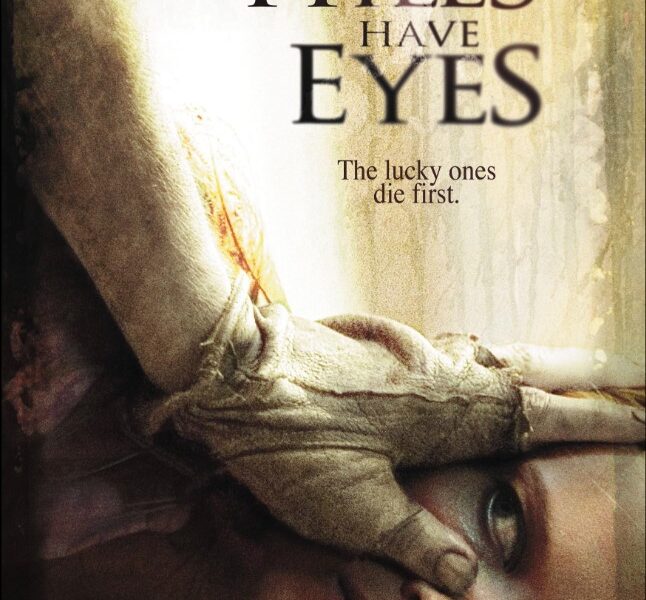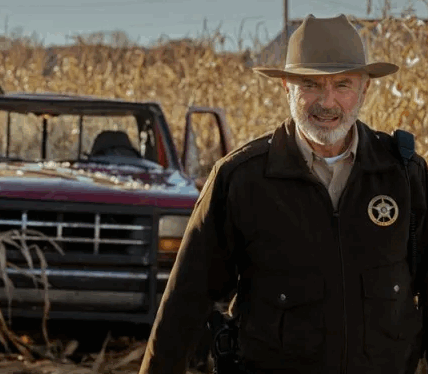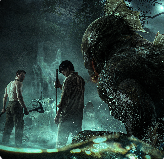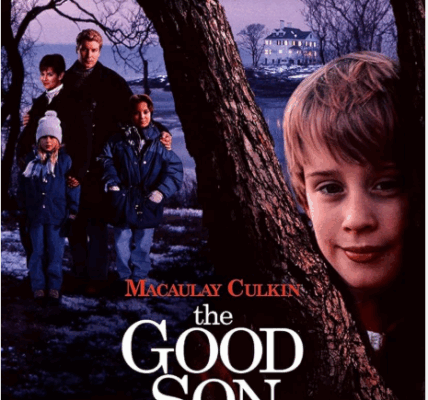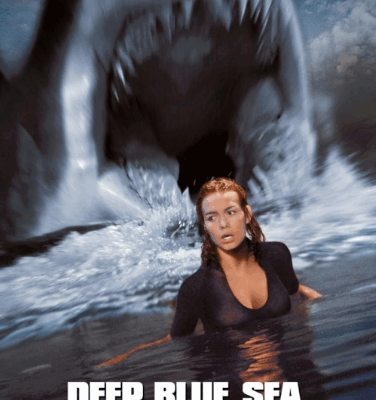1. Plot Summary (Spoiler-Light)
The Carter family is taking a road-trip vacation by trailer through the desert in New Mexico. While traveling, they are led (by a local gas station attendant) onto a back road which turns out to be dangerous. The trailer is sabotaged and the family becomes stranded in a desolate area established decades earlier as an atomic testing zone by the U.S. government.
They soon discover the area is not deserted: mutated, cannibalistic “hill people,” the descendants of nuclear-test victims, live hidden in the hills, and they begin terrorizing the family. What begins with fear and attempts to escape escalates into a brutal fight for survival. As the mutants attack, the Carters are pushed to their limits — physically, morally, emotionally — leading to a tense, violent, and often shocking confrontation.
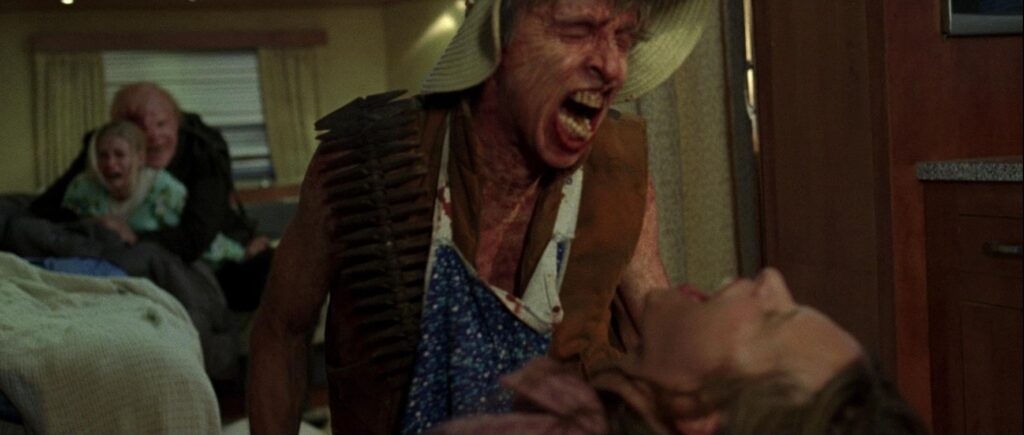
2. Notable Elements
a. Visuals, Gore, and Creature Design
- Alexandre Aja’s remake leans heavily into visceral, gruesome imagery. The mutant antagonists are more fleshed-out physically (makeup, prosthetics, deformities) than in the original, making them more explicitly horrifying.
- Several scenes are especially unsettling: the “camper attack” (where the trailer is ambushed), the burning of Big Bob, the mutant children’s interactions, etc. The gore is not shy.
b. Pacing and Tone
- The film takes its time to build tension in the first half: family dynamics, roadside warnings, the increasing unease of being stranded. Then it shifts into more extreme horror + survival action in the second half. Viewers report it becomes much more brutal past the halfway point.
- There are both psychological moments of dread and very physical, shocking violence. The atmosphere is oppressive: isolation, darkness, the environment itself is threatening.
c. Character & Moral Stakes
- The Carters are given more emotional weight than just generic victims — family tensions, fears, parenthood, responsibility are all in play. Doug’s transformation from a more passive/reluctant type into someone fighting back is central.
- The mutants are not completely mindless; some have tragic backstory (mutations from nuclear tests), though the film doesn’t spend excessive time on it. But that backstory adds a layer of horror beyond just “they’re evil.”
d. Comparison with the Original (1977)
- The remake is quite faithful in structure to Wes Craven’s original, but Aja pushes the violence and grotesque visuals further. Some scenes are more graphic than what the original had, or what many viewers expected.
- The setting is updated (nuclear test – zone logic is more explicitly part of the premise), the cinematography more modern, effects more explicit.
3. Themes & Messages
- Survival & Desperation: The film is partly about what people will do when pushed beyond their limits — including violence, moral compromise, and the instinct to protect loved ones at all costs.
- Fear of the Other / Mutation: The mutants are “othered” by society, victims of past human actions (nuclear testing). There’s a subtext of how government neglect and abuse can create horror.
- Isolation & Breakdown of Civilization: Stranded far from help, the family cannot rely on normal services or law. The desert functions as a kind of crucible, stripping away safety, technology, comfort.
- Innocence, Loss, and Parenthood: The presence of children (the baby) in the Carters, and their vulnerability, raises stakes dramatically. The film’s horror is more vivid because it involves protecting children.
- Retribution / Revenge: The mutants are not only killers but also victims in a sense; their violence is monstrous but rooted in prior human sin (nuclear testing). This doesn’t excuse their savagery, but it complicates “good vs evil.”
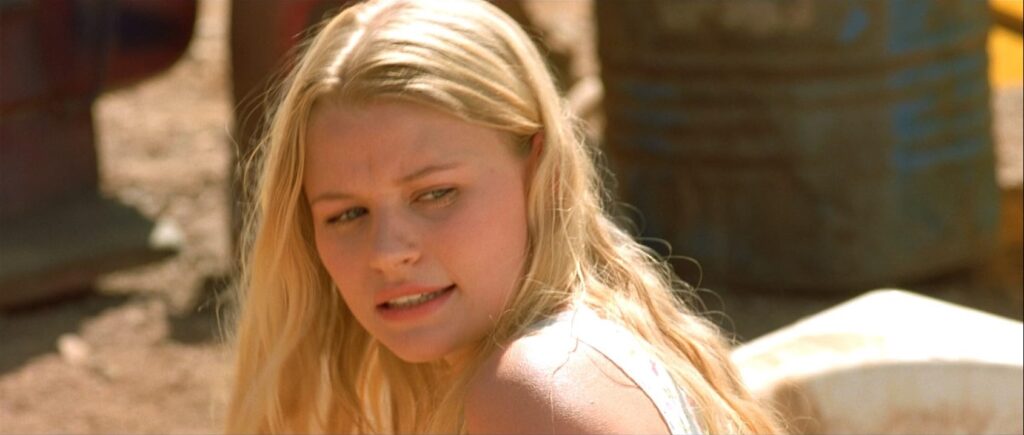
4. Personal Impressions
What works well:
- The movie does a very good job at making you feel uncomfortable, scared, physically uneasy. The desert is harsh, the mutants are grotesque, the violence unrelenting. It succeeds as a survival nightmare.
- Strong moments of horror: the camper ambush, Big Bob’s fate, the baby rescue sequence are deeply intense.
- Good performances: the family members feel like real people with fears, regrets, relationships — which makes the horror hit harder. Ted Levine, Aaron Stanford, etc., bring enough weight.
- The remake improves on visuals, effects, intensity, while keeping enough of the original that longtime fans see homage rather than betrayal.
What doesn’t quite succeed / Weaknesses:
- The violence is sometimes so extreme that it can feel exploitative rather than meaningful — some viewers may feel that certain gruesome scenes are there just to shock rather than to serve story or theme.
- Some character decisions are frustrating (as in many horror movies): splitting up, ignoring obvious danger, not reacting earlier. These can strain believability.
- The pacing in places drags somewhat before the horror fully escalates — the first part is necessary for setup, but may feel slow if you expect constant intensity.
- The ending, while satisfying in some respects, can also feel a bit abrupt, or leave loose ends. Depending on which cut you see (the unrated vs theatrical), certain scenes (especially the more graphic ones) may be cut, changing the impact.
5. Audience Recommendations
You might enjoy The Hills Have Eyes (2006) if you like:
- Horror that doesn’t hold back: gore, violence, unflinching brutality.
- Survival horror stories: family vs environment vs monstrous attackers.
- Classic horror or remakes done well: those which retain original tension but amplify for a modern audience.
- Films with emotional stakes: when you care about the protagonists, the horror becomes more than just visceral.
- Mutant horror / “isolated place with no escape” settings.
You might not enjoy it if you:
- Are sensitive to sexual violence or scenes involving assault — there’s at least one very disturbing scene.
- Prefer horror that is light, psychological, or with more ambiguity rather than full-on brutality.
- Dislike movies that push limits of gore or make you uncomfortable in visceral ways.
- Want clean endings or moral clarity — this film flirts with messy, dark territory.
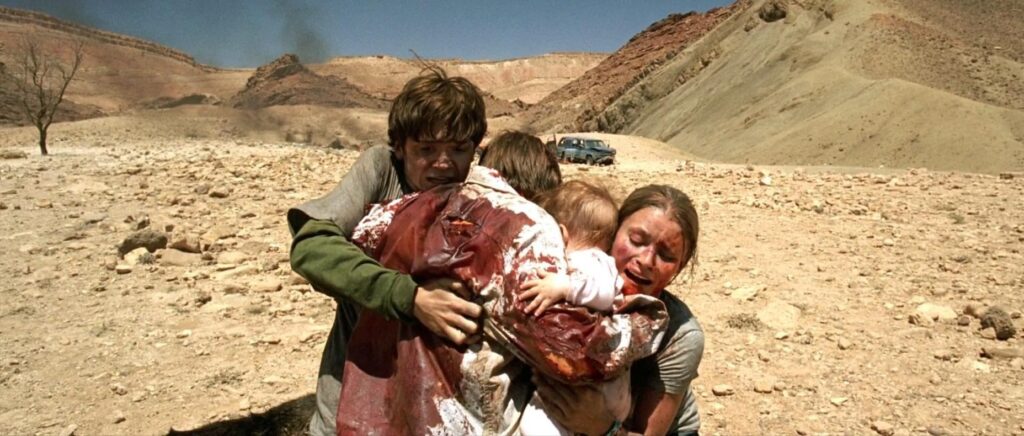
6. Conclusion & Rating
Final Thoughts:
The Hills Have Eyes (2006) is a remake that mostly lives up to its promise of delivering intense, brutal, survival horror. It’s not subtle, but it is effective. Alexandre Aja uses strong visuals, good pacing (once the ramp-up is done), strong practical/creature effects, and makes you feel the horror in every aspect — isolation, vulnerability, desperation. It’s a horror film that aims to disturb, to make you squirm, and it largely succeeds.
Rating: ★★★★☆ (4.0 / 5)
